You've got a flat tire—only one flat. The rest of your tires are in decent shape. You just need one replacement tire, right? Not quite! Although it might seem like a straightforward fix, replacing one tire on your vehicle, instead of two or four, can sometimes lead to unintended (and unfortunate) consequences. Learn what these consequences are and what to consider when replacing tires.
To achieve optimum vehicle handling, ride comfort, and road traction, it's generally recommended that you have all four tires replaced at the same time. Replacing one tire at a time can present challenges down the road since the one tire will have a different tread depth and thus different accelerating, braking, and cornering abilities than all of the others.
Think about it this way. Imagine if one of your running shoes got a hole in the bottom. Instead of buying a new pair of shoes, you buy just one shoe. Trying to run with one brand new and one worn shoe would probably feel pretty awkward and unbalanced.
Your car feels the same way when you replace just one tire. Significant wear imbalances between tires can negatively impact overall vehicle performance and stability. Plus, electronic and mechanical vehicle systems (like transfer cases, differentials, anti-lock brakes, and traction control systems) may have difficulty interpreting information from your tires when one is noticeably different from the rest.
Also, some vehicle manufacturers have specific recommendations or restrictions against the replacement of fewer than four tires. Check your owner's manual to see what your manufacturer recommends.
Perhaps you only have the time and money to get one tire replaced. Or, your tire technician has evaluated the existing tread depth on your car's remaining tires, checked the vehicle’s owner’s manual and determined that replacing one tire is okay. Whatever the reason, here's how a replacement of only one or two tires generally works.
Whatever the reason, here's how a replacement of only one or two tires generally works.
When replacing one tire: The new tire is paired with whatever tire on your vehicle has the deepest tread depth. Then, both tires are mounted on the rear axle.
When replacing two tires: The two new tires are mounted on the rear axle.
Also, if replacing only one or two tires, it is recommended that the tires are placed on the rear to prevent hydroplaning during wet road conditions.
Things are a bit trickier with four- and all-wheel drive vehicles. Even tiny differences in tire diameters on an axle, or between tires on different axles can lead to a glitch in the drivetrain system. Usually, all four tires are recommended to be replaced at once, but always check your vehicle manufacturer's recommendations for specific guidance regarding your vehicle.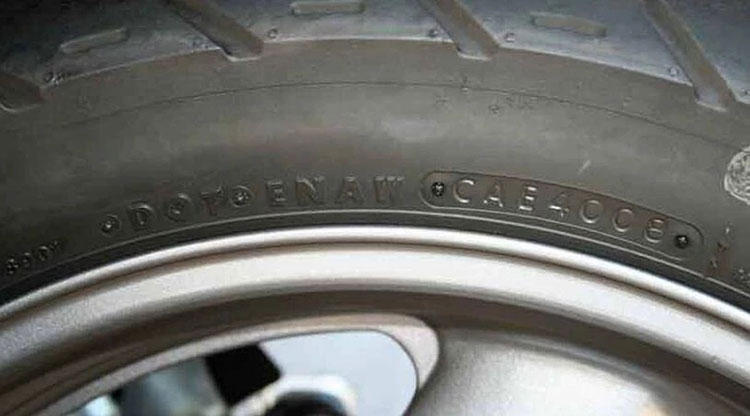
Vehicles with staggered fitment have different size wheels on the back and the front of the car. Wider and/or taller wheels are usually mounted on the back, which results in more grip on acceleration and a sportier aesthetic appeal. Common vehicles with staggered fitments include the INFINITI G35, Nissan 350X, Chevrolet Camaro, Dodge Challenger, and Ford Mustang.
When it comes to replacing one or two tires, always follow the vehicle manufacturer's recommendations. If none exists and no tires show excessive wear, it might be acceptable to install one or two tires to either axle as needed.
Replacing a single tire isn't always a good idea. Thankfully, with Firestone Complete Auto Care's selection of affordable tires with free installation services, you don't need to change just one tire! Help maintain solid control of your vehicle and visit your trusted local tire experts for repairs and replacements that are Fixed Right, Priced Right, Right on Time!
Tires April 17, 2020
Blowing out a tire can be a hassle.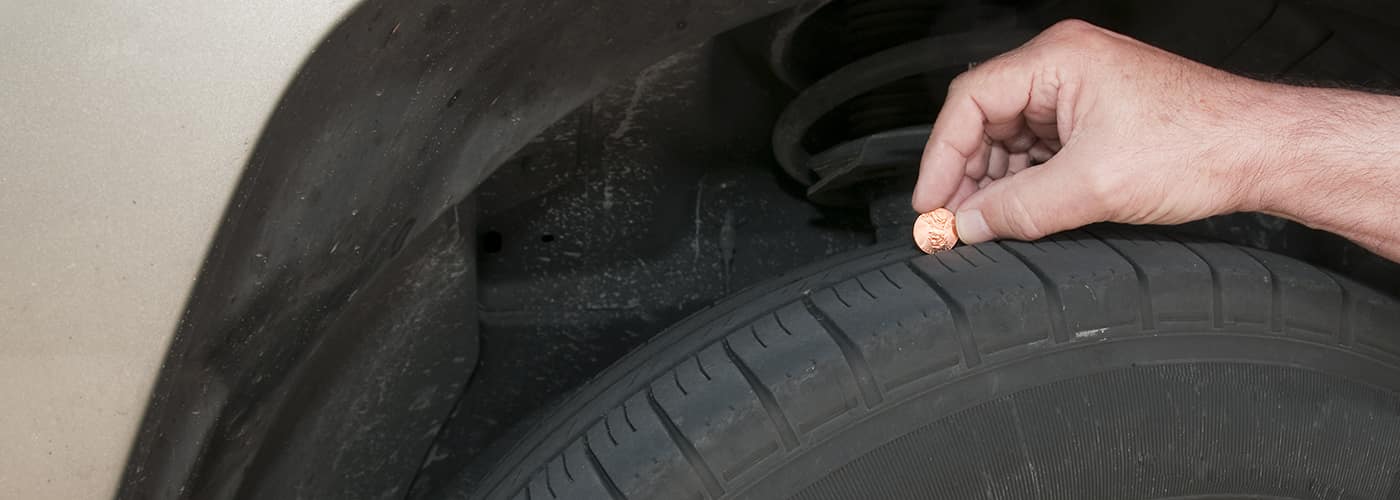 You figure that it will be a quick fix—head to the tire shop, pick out the same model (or maybe one that’s a little less expensive?) and boom—you’re done.
You figure that it will be a quick fix—head to the tire shop, pick out the same model (or maybe one that’s a little less expensive?) and boom—you’re done.
But in many cases, you’ll be told that you should really replace all four tires. Wait, what? The cost just quadrupled and you’re getting rid of three tires that are, as far as you can tell, doing just fine.
We get asked a lot if you can replace just one tire on your car. And, really, it depends on the situation. Here are some variables that will help identify if you can replace just one tire or two tires or if you need a set of four.
First, let’s look at why replacing a tire on your vehicle might be necessary in the first place.
When Do You Need to Replace a Tire?In many cases, the culprit is your tire tread depth. Generally, the tread on new tires ranges from 10/32 of an inch to 11/32 of an inch. The Virginia State Police deem tires unsafe when the tread depth reaches 2/32”, and the vehicle will not pass a Virginia state safety inspection.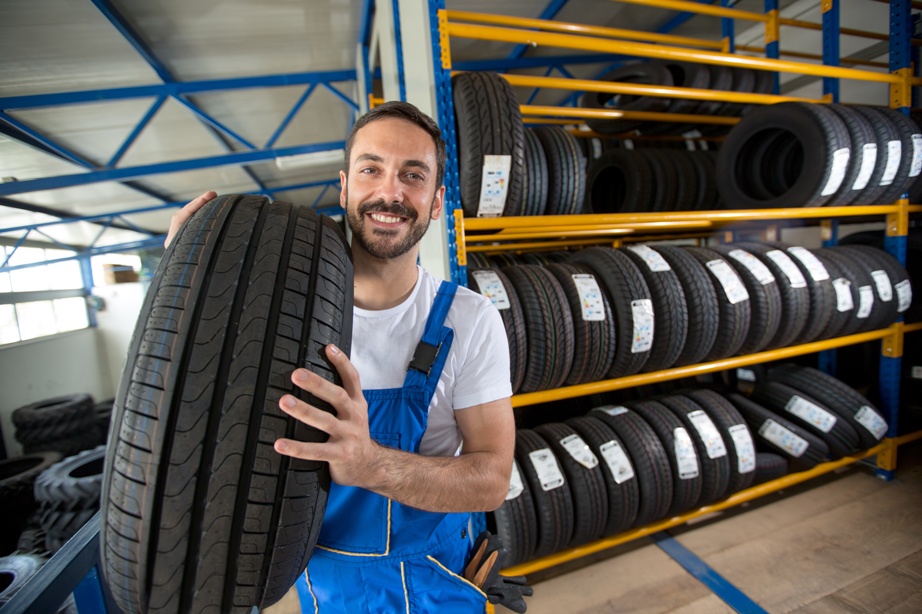
However, Virginia Tire & Auto recommends replacing your tires when they get to 4/32” or lower. It’s a question of safety.
Once tread wears down to below 4/32”, traction, especially in wet conditions, becomes a problem. The lower the tread, the higher the risk of hydroplaning.
Plus, with lower tread depth, your car may not be able to stop fast enough to prevent a serious accident. A couple seconds of stopping time can be the difference between stopping short or not in time.
Read: How Tire Tread Depth Affects Stopping Distance
If you can’t remember the last time you had your tires rotated, you may be burning through your front tires—yet another reason why you might need to replace a tire. Front tires tend to wear out faster than back tires because they’re carrying the weight of the engine and they steer the car, which adds additional friction.
There’s always the possibility of a tire pressure leak, which would cause the tire to be under-inflated, or a tire blowout. Vehicles built since 2007 have Tire Pressure Monitoring System (TPMS) sensors that will alert you if your tire pressure is low on your dashboard. However, it is always best practice to visually inspect each tire before any trip. If the leaky tire cannot be patched, you’ll have to spring for a new tire.
Vehicles built since 2007 have Tire Pressure Monitoring System (TPMS) sensors that will alert you if your tire pressure is low on your dashboard. However, it is always best practice to visually inspect each tire before any trip. If the leaky tire cannot be patched, you’ll have to spring for a new tire.
An over-inflated tire can also cause tire damage. Over-inflating a tire decreases the amount of contact the tire has with the road, making it more susceptible to damage when hitting a pothole.
Even if the tire tread hasn’t worn down, it doesn’t mean your tires are safe on the road. As tires age, they deteriorate, and, over time, they can become safety hazards. This is why, according to automakers and tire manufacturers, you should replace tires every five to 10 years.
Read: How Long Should Tires Last? 6 Factors to Consider
What to Consider Before Replacing Only One TireSo, can you replace just one tire on your car? The answer is: it depends. Here’s what you should keep in mind:
Here’s what you should keep in mind:
To replace just one or two tires without adversely affecting performance and safety, the other tires need to have an adequate amount of tread left. If your tires are pretty new, you may be able to get away with just replacing one or two tires.
If your tires have worn down and there will be more than 4/32” difference between the new tires and old tires, you should get all new tires.
2. Type of TireThe tread pattern and tire type that your tires have should be similar. That is, whether they’re front or rear tires, you want all your tires to be the same model and have the same or similar tread condition.
Why? Because subtle differences in tires affect their behavior—more specifically, your vehicle’s ability to accelerate, brake, corner, and handle water. You want a balanced, predictable driving experience.
If the exact tire model isn’t available, go for the most similar option.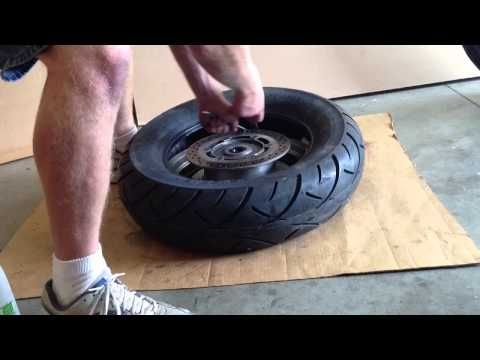 (Ex: If you have all-season tires, get another type of all-season tire. If your tires have a directional tread pattern, don’t get a tire with an asymmetric or symmetric tread pattern.)
(Ex: If you have all-season tires, get another type of all-season tire. If your tires have a directional tread pattern, don’t get a tire with an asymmetric or symmetric tread pattern.)
Is your car an all-wheel drive (AWD)? If so, most vehicle manufacturers and the Tire Industry Association (TIA) recommend that you always replace all four tires at the same time.
That’s because the reduced diameter of the lower-tread tires causes them to spin faster than the new one. Wheels moving at different speeds on an AWD vehicle will put additional strain on engine components (such as the transmission and transfer case), which could result in major damage and costly repairs.
If there’s a variation of more than 2/32”, you will need to replace two or four tires. Check your vehicle’s owner’s manual to see what the manufacturer recommends; some say to replace all four, but some say it’s okay to just replace two.
It may be hard to believe that such a small difference can make a big impact, but even slightly mismatched tires could cause damage to the drivetrain on an AWD vehicle.
Let’s Recap:
Whatever your vehicle’s make and model, the tire experts at Virginia Tire & Auto can guide you to the tires that are right for you.
Read: How to Pick the Right Tires for Your Car
How to Care for Your New Tire(s)If you decide to replace one or two tires, then you have to choose where to place them! Should you put new tires on the front or the back?
If you replace one or two tires, it’s usually best to place the new tires on the rear axle since the rear tires give your vehicle stability. This will help prevent oversteering or spinning out.
This will help prevent oversteering or spinning out.
No matter how many tires you choose to replace, you can prevent premature wear by practicing proper tire maintenance:
Rotate Your TiresTo get the most from your tires, rotate them according to the schedule recommended in your owner’s manual. In addition, have a trusted tire professional inspect your tires at each rotation.
Check Air PressureThis should be done monthly and the tire pressure should be adjusted as needed to prevent a dangerous blowout. Be sure to choose a service facility equipped to care for Tire Pressure Monitoring Systems (TPMS).
Repair Flat Tires (safely!)There’s a right way and a wrong way to repair a flat tire. Even if, based on price, they seem like a good deal, do not accept string- or fabric-based plugs. Driving on plugged tires can result in serious accidents and fatal injuries.
For safety reasons, you want to use the patch-plug method.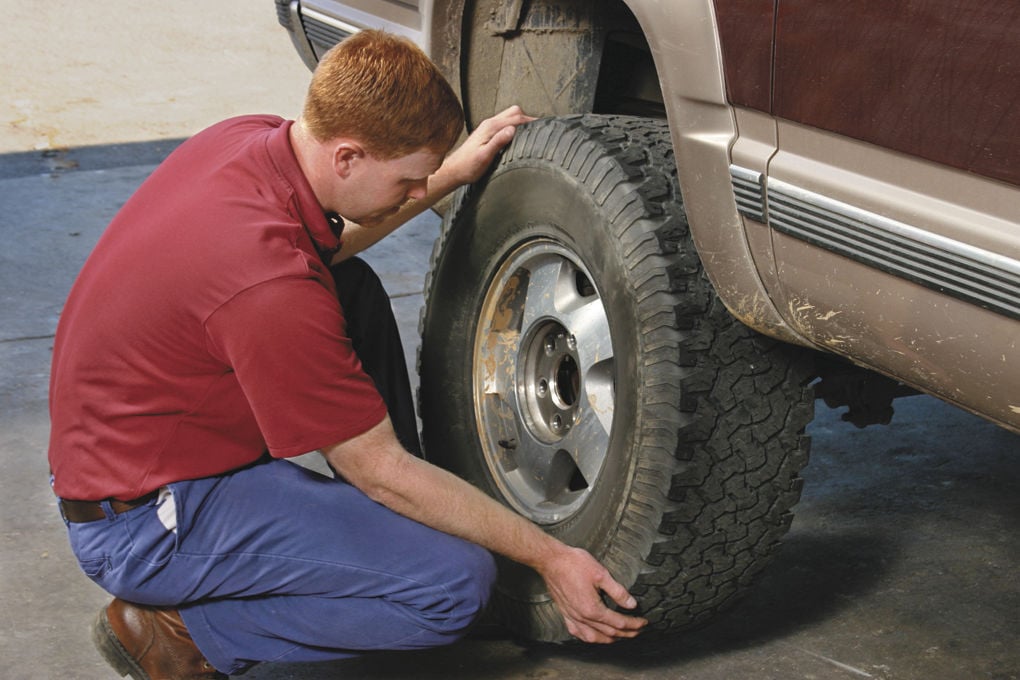 No other method for repairing a flat tire is safe. and, normally, patching takes 20-30 minutes.
No other method for repairing a flat tire is safe. and, normally, patching takes 20-30 minutes.
For peace of mind, let a qualified auto-care expert repair your flat tire. They will inspect it inside and out to make sure it can be safely patched, and, normally, patching takes 20-30 minutes.
And remember, for safety reasons, a tire can be repaired two (but not three) times. It is far better to replace a damaged tire than risk potentially serious or fatal injuries.
Read: Proper Tire Maintenance 101: Taking Care of Your Tires
Need Auto Care?No one likes to replace a tire. But at the end of the day, we want to ensure that you have a safe ride. Replacing all four tires for one flat may seem like a waste of money, but often it is the safest investment to make for the well-being of your vehicle and all the people who share the roads with you.
Whether you need a new tire (or set of tires), a simple oil change, new brakes or complex repairs, the experts at Virginia Tire & Auto can help.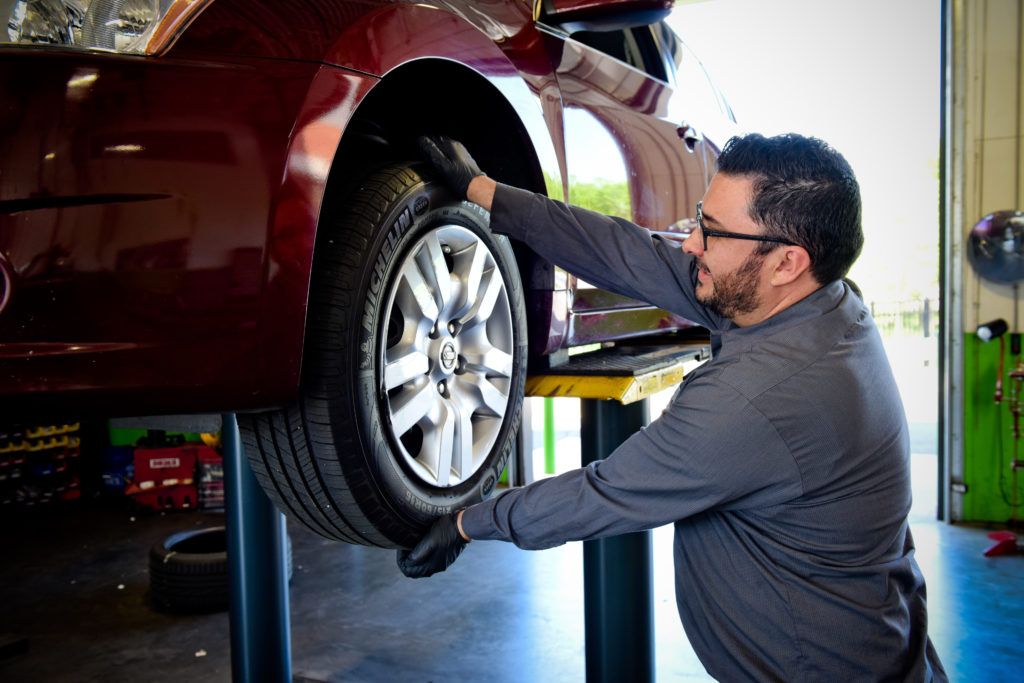 For a better, safer driving experience, schedule an appointment or drop into one of our 17 locations today!
For a better, safer driving experience, schedule an appointment or drop into one of our 17 locations today!
Car tires - an elastic shell mounted on a disc rim. It is the tires that dampen the small vibrations that occur due to imperfect roads and compensate for the inconsistency in the trajectories of the wheels. The characteristics of tires affect: driving comfort, maneuverability and vehicle stability. However, even the highest quality rubber eventually deteriorates. Therefore, every driver should know how to correctly determine the degree of tire wear in order to replace them in time. Car and truck tires have different periods of use, depending on both the initial characteristics of the products and the operating conditions.
Tires wear out not only due to operational loads. They are characterized by natural aging, since the rubber compound from which the tires are made gradually loses its elasticity and resilience.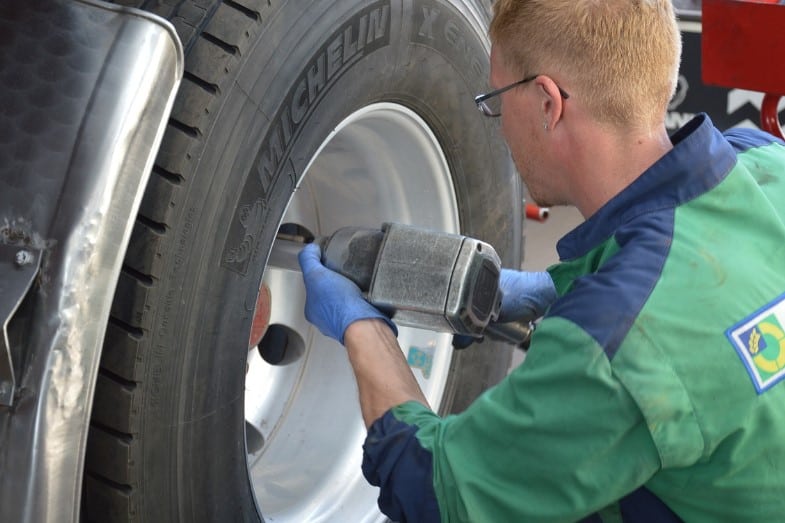 The use of such rubber leads to a deterioration in vehicle controllability and creates dangerous conditions due to the high probability of tire rupture on the way.
The use of such rubber leads to a deterioration in vehicle controllability and creates dangerous conditions due to the high probability of tire rupture on the way.
In accordance with GOSTs 4754-97 and 5513-97, the warranty period for car tires is 5 years. Foreign manufacturers claim that the service life of tires is 5-10 years. There are no legislative acts obliging drivers to change tires after this period, but in order to create safe driving conditions, the driver must take into account the recommendations of GOST. Manufacturers usually set their own warranty periods.
Michelin, Bridgestone, Nokian, Continental, Dunlop, Pirelli, Yokohama:
| Brand | Warranty period declared by the manufacturer |
| Bridgestone | Tire dependent - 3-6 years |
| Nokian
| 5 years |
| Continental | 10 years old |
| Dunlop | Tire dependent |
| Pirelli | Tire dependent |
| Yokohama | 5 years |
| Michelin | 10 years old |
During the warranty period, the responsibility for identified significant defects rests with the manufacturer. The owner of the vehicle will be forced to eliminate defects on his own if there have been:
The owner of the vehicle will be forced to eliminate defects on his own if there have been:
If the vehicle is used intensively, it may be necessary to replace the tires before the end of the warranty period.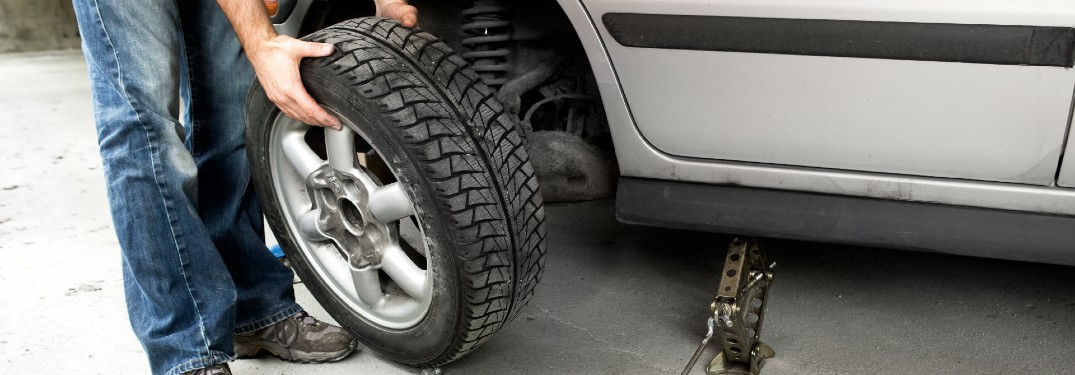 Therefore, regulatory documents establish the mileage after which you should think about replacing tires.
Therefore, regulatory documents establish the mileage after which you should think about replacing tires.
The maximum standard mileage is:
The actual rate of tire wear may differ from the standard values due to a whole list of factors, such as:
 Low-quality products under the influence of abrasive particles wear out very quickly.
Low-quality products under the influence of abrasive particles wear out very quickly. You can determine the need for tire replacement yourself by the following signs:
Table of minimum allowable tread depth for different modes of transport as amended on 01.01.2015
| Minimum allowable remaining tread depth | Type of transport |
| 0.8 mm | L - motorcycles, mopeds, quad bikes |
| 1. | N2, N3, O3, O4 - trucks with a maximum permissible mass of more than 3.5 tons and trailers with a maximum permissible mass of more than 3.5 tons |
| 1.6 mm | M1, N1, O1, O2 - cars, trucks and trailers with a maximum authorized mass of less than 3.5 tons |
| 2.0 mm | M2, M3 - buses |
| 4.0 mm | Winter tires marked M+S, M&S, M S, the residual tread depth does not depend on whether tires are installed on cars or trucks |
 If it does not exceed 50% of the original value, then the tires must be replaced.
If it does not exceed 50% of the original value, then the tires must be replaced. Important! If the outer edges of the tire wear faster, the internal pressure is insufficient. Accelerated wear of the central part indicates excessive pressure. Wear on one side indicates a violation of the toe angle. Uneven surface wear is evidence of aggressive driving with rapid acceleration and hard braking.
You can extend the life of your tires by doing the following:
Normative document regulating the terms and conditions of tire storage - GOST 24779-81.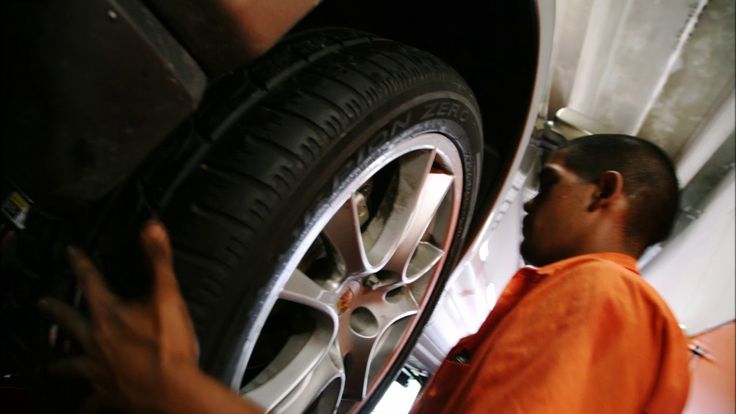 However, it is believed that when standard storage conditions are created, after 5 years of storage, tires retain the characteristics corresponding to the properties of a new product. If this period is exceeded, product characteristics may decrease.
However, it is believed that when standard storage conditions are created, after 5 years of storage, tires retain the characteristics corresponding to the properties of a new product. If this period is exceeded, product characteristics may decrease.
Basic requirements for a room intended for storage of tires:
Previous article↑ ArticlesNext article Read
Many drivers will have their own opinion on this matter. Some will focus on the requirements of the law, namely the minimum tread depth. Others will say that tires should not be used for more than five years, after which the rubber loses its properties and becomes "wooden". Still others will remember that they read about mileage limits ranging from 40 to 60 thousand kilometers. The fourth will operate only with the amount of money in the wallet.
There is, of course, a very desperate group of motorists.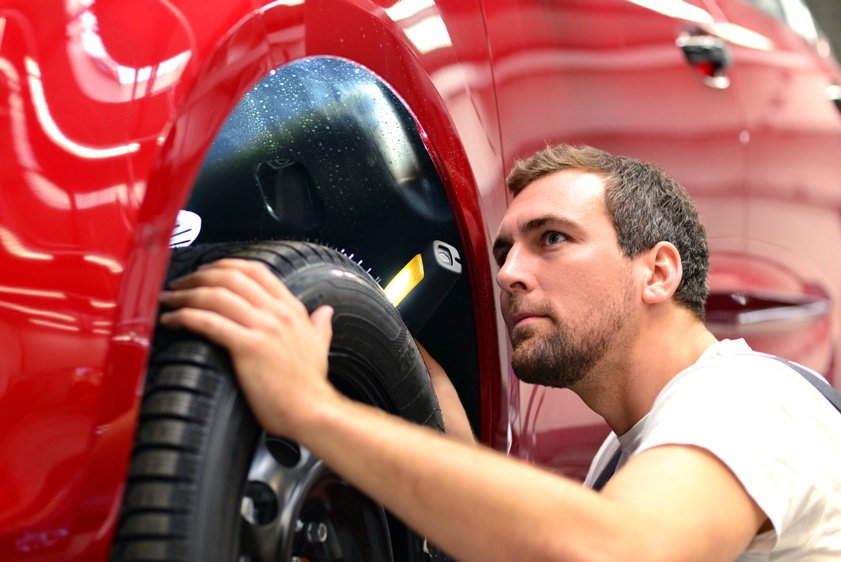 These guys drive to the last and erase the "meaty" tires to the state of a racing slick. Well, individual adepts can be seen rustling spikes on the asphalt in mid-July.
These guys drive to the last and erase the "meaty" tires to the state of a racing slick. Well, individual adepts can be seen rustling spikes on the asphalt in mid-July.
Whose approach is correct? There is no definite answer, except that the latter pose a serious danger both to themselves and to other road users. Almost all the remaining methods have some logic behind them.
Driving with tires with less than the required tread depth is punishable by a fine. The police rarely pay attention to this, but it is worth keeping in mind the administrative responsibility. So, according to part 5 of article 590 of the Code of Administrative Offenses of the Republic of Kazakhstan, 5 MCI, or 13,890 tenge in 2020, will have to be paid to the treasury. Repeated violation within a year increases the penalty to 20 MCI (55,560 tenge).
The minimum residual tread depth is specified in paragraphs 5.6.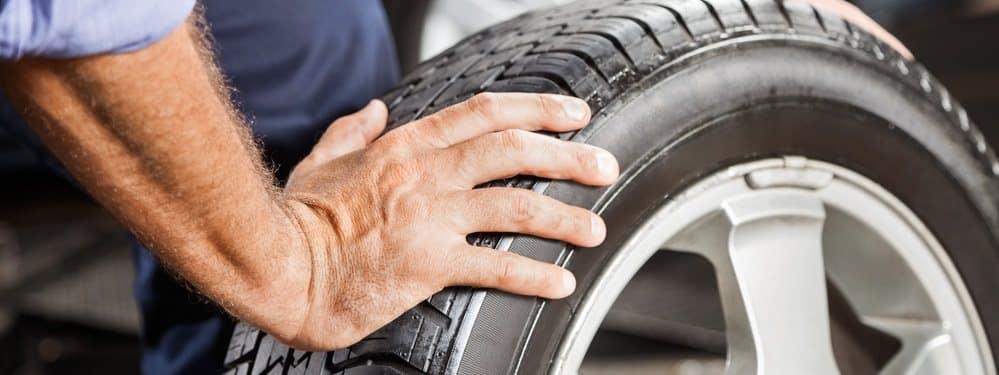 1 and 5.6.2 of Appendix No. 7 TR CU 018/2011 "On the safety of wheeled vehicles". The text says that for passenger cars, the balance must be at least 1.6 mm for summer tires and at least 4 mm for winter and marked with signs: M + S, M & S and M S.
1 and 5.6.2 of Appendix No. 7 TR CU 018/2011 "On the safety of wheeled vehicles". The text says that for passenger cars, the balance must be at least 1.6 mm for summer tires and at least 4 mm for winter and marked with signs: M + S, M & S and M S.
Note that measuring the tread depth with a ruler is an extreme step. Almost all modern tires have special wear indicators. As soon as they appear, the rubber should be replaced.
The average life of almost all tires from major manufacturers is 7-10 years, depending on their seasonality. True, such a duration should be expected if a number of operational requirements are met. These include driving on high-quality roads with optimal tire pressure, correctly set wheel alignment angles and a normally working suspension.
Tire age can be found by a special marker. The four digits enclosed in an oval (more often found on the inner sidewall) are the DOT marking, in a simple way, the production date.
The first two digits indicate the week, and the last two indicate the year of manufacture.
Any of the above parameters can significantly reduce the life of the rubber. For example, with insufficient pressure in the wheel, the side parts of the tread will wear off faster, with high pressure, its middle part. Violations in the geometry lead to uneven tire wear.
The middle part of the tread is worn more. The reason may be an excess of pressure in the wheelHow and where the rubber is stored is also an important factor. Manufacturers recommend a dry, cool and dark room.
In Kazakhstan, you should not count on more than five years of operation. Nevertheless, one set of wheels can really drive for about ten years. Whether it's worth it is a completely different question. From personal (almost) experience: tires manufactured in one of the CIS countries served from mid-2008 to spring 2018. The annual mileage of the car was small, about 10,000 km per year, including sorties on light off-road.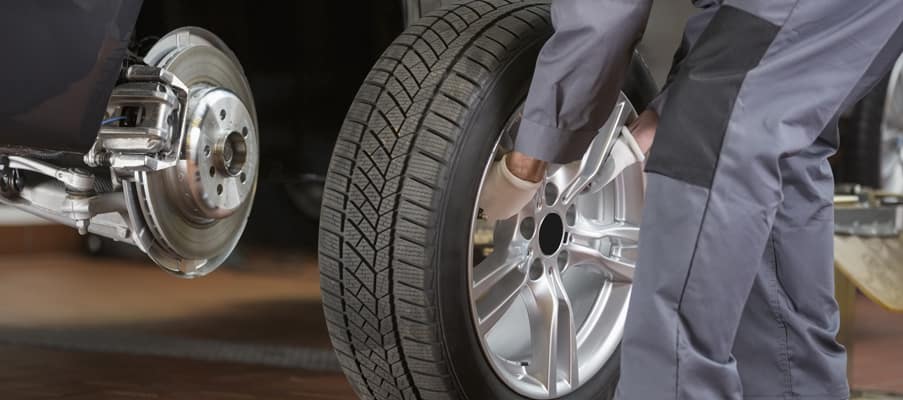 The rest of the tread after all this time would have allowed the same amount of travel, but when one of the tires was removed for repair (the wheel was regularly flattened), the landing board literally crumbled.
The rest of the tread after all this time would have allowed the same amount of travel, but when one of the tires was removed for repair (the wheel was regularly flattened), the landing board literally crumbled.
Another benchmark for tire replacement is mileage. There are often recommendations on the Web that refer to GOST. Their text says: for passenger cars with a carrying capacity of up to two tons, the service life of tires is 45,000 kilometers.
You can also find references to the operating mileage standards for vehicle tires approved by the Ministry of Transport of the Russian Federation. In them, the average service life varies from 40 thousand kilometers for Russian rubber to 60 thousand for foreign. Note that this document became invalid after the entry of the Technical Regulations of the Customs Union.
You can also determine how much a tire can run by using the Treadwear (TW) parameter, which indicates the tire wear index. He rarely receives attention. This figure is usually of interest to those who plan to operate the car in a sports environment. Soft and, accordingly, tenacious rubber has a fairly low TW, which racers are guided by.
This figure is usually of interest to those who plan to operate the car in a sports environment. Soft and, accordingly, tenacious rubber has a fairly low TW, which racers are guided by.
Surely you have a reasonable question about how the wear resistance index correlates with mileage. TW appeared thanks to the specialists of the National Highway Traffic Safety Administration (NHTSA). To calculate it, the tire at the test site is compared with a special sample, the TW of which is already known.
According to the methodology, the TW100 is equivalent to 48,000 mileage until the tires are completely worn out, that is, Nokian Hakka Green, for example, having a TW400, is capable of serving up to 192,000 kilometers. True, in the real world, wear is influenced by many factors that we talked about above, as well as driving style. Therefore, the results of calculations for TW are recommended to be divided by two. It turns out 96 thousand, or almost 5 years of operation, provided that in the warm season the car drives about 20 thousand kilometers.
In total, we have three parameters that should help with understanding how long tires will last if they are used correctly, and also tell you when to send a set of tires to the scrap and take care of buying new ones. This can be done on the Kolesa.kz portal using the search form in the "Spare Parts" section.
| | 5.2K 16
| | 36.